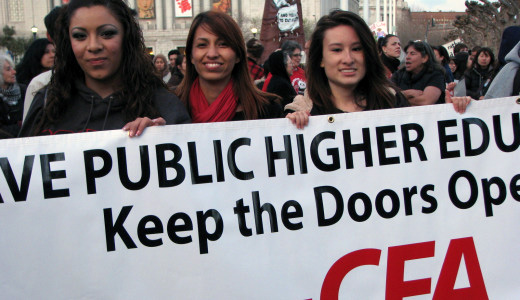
March 8, International Women’s Day, grew from two sources — the struggle of working women to form trade unions and the fight for women’s right to vote.
On March 8, 1857, garment workers in New York City marched and picketed, demanding improved working conditions, a ten-hour day, and equal rights for women. The police broke up their ranks. Fifty-one years later, March 8, 1908, their sisters in the needle trades in New York marched again, honoring the 1857 march, demanding the vote, and an end to sweatshops and child labor..
This historic demonstration led in the following year to an “uprising” of 30,000 women shirtwaist-makers that resulted in the first permanent trade unions for U.S. women workers.
News of the heroic fight by U.S. women workers reached Europe. In particular it inspired European socialist women who had established the International Socialist Women’s Conference on the initiative of German socialist feminist Clara Zetkin (1857-1933), a Marxist theorists and activist for women’s rights.
In 1910 Zetkin made a motion to the Copenhagen Conference of the Second International:
“The socialist women of all countries will hold each year a women’s day, whose foremost purpose it must be to aid the attainment of women’s suffrage.”
Zetkin’s motion was carried. Rallies and demonstrations in the US and many European countries marked International Women’s Day in the years leading to World War I, although on different days each year.
Zetkin, who was editor of Gleicheit (Equality), and British suffragist Sylvia Pankhurst, editor of Women’s Dreadnought, saw that the struggle for women’s rights and women’s liberation was firmly tied into the struggle for socialism.
Both thought that socialism would be impossible to achieve without the active involvement of women.
In 1917 in Russia, International Women’s Day acquired greater significance — it became the flashpoint for the Russian Revolution.
On March 8 women workers in Petrograd held a massive strike and demonstration demanding “peace and bread.” The strike movement spread from factory to factory and effectively became an insurrection.
The day became a national holiday in the Soviet Union and eastern European countries but was largely ignored here in the U.S. despite the fact that in 1975 — International Women’s Year — the United Nations recognized the day.
The UN theme for International Women’s Day 2013 is “A promise is a promise: Time for action to end violence against women,”
In the famous 1912 Lawrence, Mass., textile strike, women carried picket signs reading “We want Bread and Roses, too”, symbolizing their demands for not only a living wage but a decent and human life, and so inspired James Oppenheim’s song “Bread and Roses”
As we come marching, marching, in the beauty of, the day
A million darkened kitchens, a thousand mill lofts gray
Are touched with all the radiance that a sudden sun discloses
For the people hear us singing, Bread and Roses, Bread and Roses
As we come marching, marching, we bring the greater days
The rising of the women means the, rising of the race
No more the drudge and idler that toil where one reposes
But a sharing of life’s glories, Bread and Roses, Bread and Roses
Morning Star and CLUW contributed to this article.
Photo: PW/Marilyn Bechtel












Comments